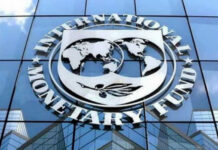
To support the COVID-19 affected economy, some experts are suggesting that the government of Bangladesh should go for printing money. However, I feel that there is no need to take such a radical measure since Bangladesh has a number of policy tools at its hand at the moment to rejuvinate the economy.
What are the developed economies doing?
Before discussing Bangladesh’s options, let us have a look at how the developed countries are dealing with the liquidity situation in their own countries right now. This is because, many of us often get confused and cannot distinguish among circumstances of different economies.
Countries across the world have rolled out stimulus packages to prop up the economy. Bail out packages range from providing more funds for healthcare services to income support measures to loans for the affected businesses at easy terms. As the corona pandemic created both demand and supply shocks, governments have resorted to a policy-mix that includes fiscal, monetary and sectoral measures.
As the objective is now to revive economic activities, make up for the lost output, recuperate employment and feed the poor, countries need a lot of money. So, they are using all types of monetary policy tools that they have at their disposal, such as lowering interest rates and Quantitative Easing (QE) to pump money into the financial system.
Bail out packages of the developed countries including Australia, Canada, the USA, the UK and Japan are massive. But not all of them have enough fiscal space. Rather, many of them have large debt-GDP ratio. Also, these countries have already cut their interest rates so much that they cannot lower it any more to create more liquidity to support their stimulus packages. As these countries have run out of all options, the only option they have is to go for “money printing scheme” through QE. In simple words, when QE is adopted, central banks of countries buy government bonds and other financial assets from banks. This creates liquidity space for banks and financial institutions which they can lend to individuals and businesses. It is claimed that QE has worked well for countries like the USA, the UK, Europe and Japan in dealing with the impact of the global financial crisis in 2009.
But this experience varies from country to country. All economies are not on the same footing. They have differences not only in terms of size and growth of the economy, fiscal situation, money supply and inflation, but more importantly, in terms of financial governance and structural reforms. QE may have brought some success in the developed economies, but not totally. Because, QE has made some people better off while others continue to live in financial difficulty even in the USA. And debt burden on their people continues to rise.
Where did money printing fail miserably?
Some low-income countries fell into hyperinflationary situation by printing money. In the 2000s, the government of Zimbabwe printed huge amounts of currency to finance war with Congo and bribe corrupt officials. And in 2008, prices had gone up to as high as 231,000,000 percent in a single year in Zimbabwe. In 2019, Venezuela experienced hyperinflation of 10,000 percent when its government printed money to finance its huge budget deficit of 30 percent. Due to lack of strong economic management and high corruption these countries found it extremely difficult to reverse their situation. While Zimbabwe recovered from the crisis by changing its currency to USD, Venezuela is struggling to come out of the situation.
How can Bangladesh generate liquidity?
For Bangladesh, following the footstep of other countries in printing money will not only be unwise, but also self-destructive. As opposed to the developed countries, Bangladesh can, at present, mobilise liquidity in several ways.
First, to support the fiscal stimulus announced by the government, Bangladesh Bank has taken a number of measures. It has reduced Cash Reserve Ratio (CRR) of banks by 1.5 percentage point and REPO rate by 0.5 percentage point. This has generated Tk 18,600 crores. Besides, the commercial banks have a deposit of Tk 3,13,000 crores with the central bank in approved securities against the Statutory Liquidity Ratio (SLR) requirement of Tk 2,10,000 crores. Liquidity can also be created through REPO against those securities.
Second, Bangladesh Bank has increased the Advance-Deposit Ratio (ADR) for all the conventional banks by 2 percent. This should increase loanable fund for commercial banks by about Tk 20,000 crores.
Third, the government can think of relaxing ceiling on purchasing savings certificate for the time being. In June 2019, at the beginning of the current fiscal year, the government had imposed restrictions on sales of savings certificate. As a result, sales of savings certificate declined and bank deposit increased by about 10 percent. Now in the changed circumstances, savings certificate can be another means to general liquidity, if needed.
Fourth, the government should put on hold the projects which can wait for some time or which have just been initiated. Block allocation in the Annual Development Programme should also be cancelled and the money should be used for corona-related measures.
Fifth, salaries and allowances of ministers and member of parliaments can be reduced by at least 20 percent. Some countries, including India have implemented this. Besides, the government should instruct all its departments except for the health-related ones, to reduce their cost at least by 50 percent during this critical time. Indian government has asked to reduce such expenditures by 60 percent.
Sixth, as an oil importing country, Bangladesh will gain due to oil price shock. Resources saved from low oil prices in the international market can also be another source of fund at this moment.
Seventh, a number of international funding agencies including the World Bank, the International Monetary Fund, the Asian Development Bank and Asian Infrastructure Investment Bank have come forward to support Bangladesh. This will also give the government some leverage to spend for healthcare improvement and economic recovery.
Where lies the danger?
While the above measures will be enough for reviving economic activities without printing money, we also need to be mindful of the existing unsound fiscal management and fragile financial sector. The macroeconomic management has been deteriorating gradually with low revenue collection and high public expenditures. The government itself has relied heavily on borrowing from banks during the current fiscal year FY2020. Narrow tax base, high tax evasion, illicit financial flow and wastage have created resource constraint to support development activities.
Misuse of resources in public investment makes infrastructure development unusually expensive. Additionally, with high non-performing loans, (NPLs), large amount of loan write-off, low net profitability and weak management the financial sector has become vulnerable. It is feared that the loans which are to be given to the affected businesses as part of the stimulus package may lead to wilful default, resulting in higher NPLs in banks. If the past record is any indication, one cannot but be afraid of the of the misuse of the loans announced for the affected businesses. Some of this money will float in the market without producing goods and services. And this will add to the inflationary pressure.
Though inflation in Bangladesh is 5.6 percent as of March 2020, the supply distortion has increased prices already. If money is printed in addition to the measures taken by Bangladesh Bank, it will create rapid circulation of money and will create hyperinflation which will become unmanageable. And if liquidity-induced high inflation cannot boost economic output and aggregate demand, the economy will experience stagflation.
Therefore, “money printing scheme” is not an option for Bangladesh. Rather, the government has to concentrate on managing the resources which will be generated through the policy measures of Bangladesh Bank and collected in other ways as discussed above. Efficient management and coordination of activities are the keys to succeeding in the ongoing fight against the health and economic impact of corona pandemic.
Dr Fahmida Khatun is the Executive Director at the Centre for Policy Dialogue.









